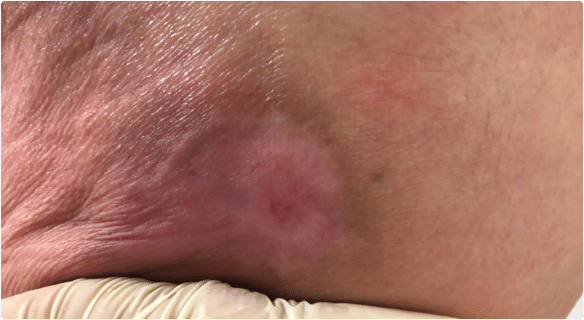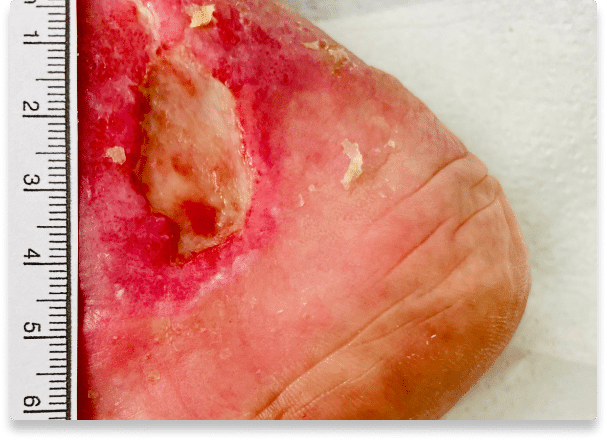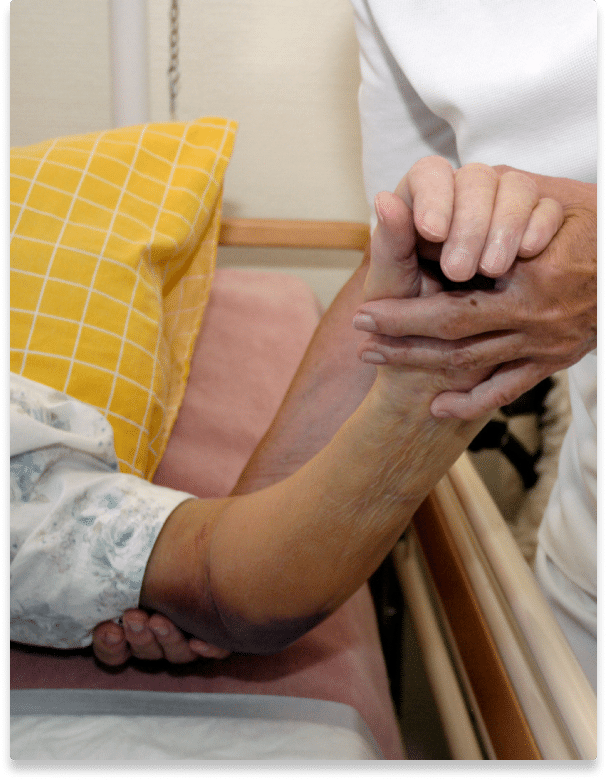How To Prevent Bedsores in the Elderly
Our health can become much more fragile as we age. Over time, we experience significant changes in our bodies, often including thinner skin and reduced bone density. Medical conditions and physical changes can adversely impact our mobility, leading to more time spent in bed or sitting in chairs.
Sitting and lying down for long periods can result in painful bedsores or pressure sores that are difficult to treat. If the person has other medical conditions or is especially frail, bedsores can lead to infections or take a long time to heal.
It’s vital to learn how to prevent bedsores in elderly individuals, especially if you’re a caregiver. Read on to learn more about bedsores. If you suspect a loved one developed bedsores due to nursing home abuse and neglect, our legal team is standing by to help. Call (800) 536-4357 or fill out our online contact form to schedule your free, confidential consultation.
What Are Bedsores?
A bedsore can develop when a person is immobile or bedridden and can’t shift their position on their own. They are particularly common among older adults, whose skin can become more fragile over time. Bedsores can develop quickly, sometimes in as little as a few hours, if blood flow is cut off to the area.

What Are the Potential Risk Factors for Bedsores?
What causes bedsores? Certain risk factors can increase an older adult’s chances of developing bedsores, including:
- Immobility – Some older adults lack the ability to reposition themselves without assistance.
- Reduced blood flow – Some medical conditions may impact blood flow, such as diabetes or vascular disease.
- Sensory perception issues – People with neurological or spinal cord injuries may experience loss of sensation, leaving them unable to feel their bedsores despite the damage they cause.
- Inadequate nutrition – Lack of vitamins, minerals, proteins, and water impacts the body’s ability to heal.
- Medical conditions – Certain conditions can impact blood flow, including diabetes and vascular disease.
What Are the Symptoms of Bedsores?
Symptoms of bedsores can vary depending on the stage of the sore, ranging from mild reddening of the skin to severe tissue damage that extends into muscle and bone.
| Stage 1 |
|
| Stage 2 |
|
| Stage 3 |
|
| Stage 4 |
|
Stage 1
- Persistent red, blue, or purple hues in the skin.
- Skin may feel warm, firm, soft, or cooler compared to the surrounding area.
- The area may be painful or itchy.
Stage 2
Loss of the outer layer of skin (epidermis) or the second layer (dermis), resembling a blister, abrasion, or shallow crater.
The area around the sore may be red and painful.
Stage 3
- Loss of skin reveals a deep wound that looks like a crater.
- Damage may extend to the tissue below the skin, creating a deep, open wound.
- Fat may be visible, but bone, tendon, and muscle are not yet exposed.
- The sore may have a foul odor, and the area around the sore may be discolored.
Stage 4
Very deep, exposing muscle, bone, tendons, and joints.
The risk of infection is high, and the damage is extensive.
The sore is larger and may have a crusty area (eschar) that is black or yellow, indicating dead tissue.
What Are the Complications of Bedsores?
If an older person develops bedsores, they may experience serious complications, including:
- Cancer – Bedsores can grow into Marjolin ulcers, which don’t heal and may develop into squamous cell carcinoma.
- Cellulitis – A cellulitis infection may cause skin inflammation and discoloration. It can cause warmth and swelling of the affected area.
- Sepsis – A bedsore may result in a sepsis infection, a hazardous, life-threatening emergency. Sepsis can result in organ failure, tissue damage, and death.
- Bone and joint infections – A bedsore infection may move into the joints and bones, resulting in cartilage and tissue damage to joints and limbs.

What Are the Signs of an Infected Bedsore?
Caregivers responsible for an older adult’s health must regularly examine the patient for symptoms of bedsores. Typically, bedsores appear on bony areas of the body where pressure is applied when sitting or lying down.
Bedridden individuals may experience bedsores on the backs or sides of their heads, their hips or lower back, or shoulder blades. Bedsores may also appear on the heels and ankles behind the knees.
What Caregivers Should Know About Bedsores
Bedsores can develop in a very short period—as little as just a few hours. Once they develop, they’re incredibly challenging to treat. It’s crucial to regularly examine an older person for bedsores, especially those with mobility issues who spend most of their time in a wheelchair or bed.

How To Prevent and Avoid Bedsores
To prevent bedsores in an older person, encourage regular movement. Getting up for a few minutes to walk around their living space helps maintain blood flow and circulation. If walking isn’t possible, frequently change the person’s position in their chair or bed. You can also raise the height of their bed if it’s adjustable.
Caregivers should also take good care of the older adult’s skin. Ensure it’s kept clean and dry, and use a regular cleansing routine to limit exposure to moisture. There are also numerous creams available that can act as a barrier to urine and stool, which can be helpful in situations where the person you are caring for struggles with incontinence. It is very important to change the bedding and clothing often to keep the skin clean and dry.
If a senior is in a nursing home, family members and relatives should regularly visit to check on them and ensure their needs are being met. If you notice signs of neglect, it’s crucial to seek help from a nursing home abuse lawyer experienced in elder law.
Prevention for People in Wheelchairs
If you’re caring for someone in a wheelchair, look for bedsores on the older person’s buttocks, tailbone, shoulder blades, and spine. Bedsores may also appear on the backs of arms and legs.
There are specialty wheelchairs with cushioning designed to reduce the risks of bedsores. Purchasing a specialty wheelchair is advisable for older adults with limited mobility and strength.

Self-care Techniques
Again, too much moisture can aggravate the skin, increasing the risk of a bedsore. Applying ointments to the skin establishes a protective barrier against excess moisture. Other self-care techniques that can help prevent bedsores include using special cushions designed to reduce pressure on the skin, changing positions frequently, and maintaining a healthy diet.
Prevention of bedsores in seniors starts with frequent movement, which encourages good circulation and blood flow. It’s important not to fall into a habit of sitting in one position too long. Physical therapy can help you recover strength and encourage movement to prevent bedsores.
How Are Bedsores Treated for Seniors?
Early detection and treatment of bedsores are crucial to prevent infection and more severe damage. A fully matured bedsore can be difficult to treat, especially once the skin breaks. Spotting it early on can prevent it from escalating and causing complications.
Non-Surgical Treatments for Bedsores
Treating a bedsore starts with removing pressure on the area. Use medicated gauze to protect the wound and keep it clean. Caregivers should also ensure the patient’s nutritional and hydration needs are met.
It’s important to seek a medical professional’s assistance, even if the patient’s symptoms appear minor. A qualified doctor can examine the bedsore and prescribe effective treatment options. Removing damaged tissue or a skin graft may be necessary in some cases.
What Medications Can Help With Bedsores?
If a bedsore becomes infected, a doctor may prescribe antibiotics, which can help cure the infection and heal the bedsore. Doctors may also suggest a nonsteroidal anti-inflammatory drug, such as Advil, Aleve, or Motrin IB to reduce pain.
How Fast Do Bedsores Heal?
The time to heal bedsores varies. Some heal within a few days, while others can take months. The patient’s general health and the severity of the bedsore are important factors when calculating healing times.
Physical Therapy and Rehab for Seniors Prone to Bedsores
Elderly individuals who suffer from mobility problems may require physical therapy, which can help alleviate problems like reduced strength and balance. Physical therapists working with immobile senior patients must take special care to teach them how to shift their position to reduce the risk of bedsores. Seated exercises, such as lower and upper body stretches, can help improve range of motion and circulation.
Sometimes, therapists use techniques such as heat application, electrical stimulation, or ultrasounds to improve an elderly person’s mobility. During therapy, it’s important to be mindful of bedsore symptoms.
In general, physical therapy options for treating bedsores focus on relieving pressure on the sore areas. Cushioning and foam pads placed in wheelchairs or bedding can help, as can electrical stimulation or hyperbaric oxygen therapy. A qualified physical therapist can recommend options.

Consult Our Team for Legal Guidance
The attorneys at Brown & Crouppen are committed to serving our community by defending the rights of injury victims, especially those most vulnerable to abuse and neglect. If you think your loved one developed bedsores due to deficient medical care or nursing home abuse, we can evaluate your case and determine if you have a viable Missouri bedsore lawsuit.
Call (800) 536-4357 or fill out our online contact form to schedule your free, confidential consultation.
